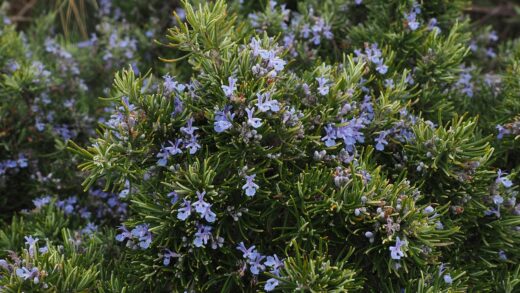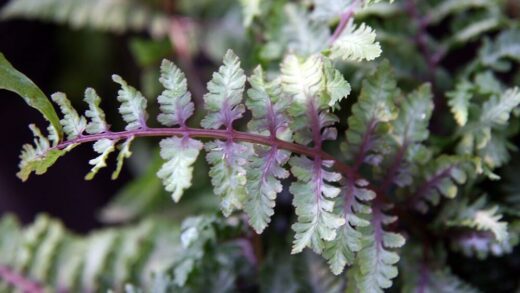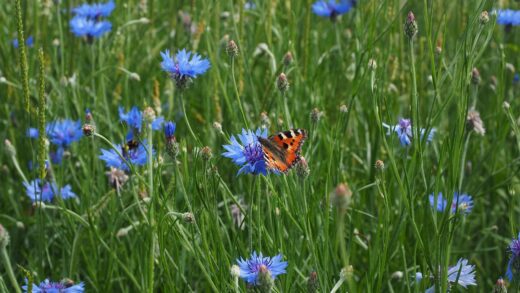The amount of light that Lithodora diffusa receives is a determining factor in its overall health, growth habit, and, most significantly, its ability to produce a breathtaking profusion of vibrant blue flowers. This plant’s relationship with the sun is a delicate balance, deeply rooted in its native Mediterranean origins where it thrives in open, sunny heathlands. Providing the correct light exposure is not simply a matter of planting it in the sunniest spot available; it requires a thoughtful consideration of your specific climate and geographical location. Achieving the optimal balance between sufficient light for flowering and protection from excessive heat is the key to unlocking the plant’s most spectacular performance. An understanding of its light preferences will guide you to the perfect placement, ensuring a dense, floriferous mat of color year after year.
In an ideal world, Lithodora craves a position that offers at least six hours of direct sunlight each day. This ample exposure to sunlight is the primary trigger for the development of flower buds, and plants grown in sufficient light will be noticeably more covered in blooms than those grown in shadier conditions. Full sun also promotes a desirable compact and dense growth habit, preventing the plant from becoming sparse and leggy. The intensity of the light helps the foliage maintain its deep, rich green color and encourages the development of a sturdy, resilient plant structure that is better able to withstand environmental stresses.
However, the term “full sun” can be relative and needs to be interpreted within the context of your local climate. In cooler, more northern latitudes or coastal areas with frequent cloud cover, providing the maximum possible sun exposure is almost always the best strategy. In these regions, the sun’s rays are less intense, and the plant can typically handle being in the open all day without suffering from heat stress or foliage scorch. A south-facing or west-facing aspect that captures the majority of the day’s sunlight will yield the best results in these cooler climates.
Conversely, in hotter, more southerly climates with intense summer sun and high temperatures, the definition of “full sun” needs to be adjusted. While the plant still requires plenty of light to flower well, the scorching intensity of the afternoon sun can be detrimental. In these hot regions, the ideal location is one that receives several hours of direct morning sun but is afforded some light, dappled shade during the hottest part of the afternoon. This protection prevents the foliage from burning and reduces the overall water stress on the plant, allowing it to thrive rather than merely survive the summer heat.
The impact of full sun exposure
Placing Lithodora diffusa in a full sun location, where it receives six or more hours of direct, unfiltered sunlight per day, has a profound and positive impact on its flowering capacity. The energy derived from this high level of light exposure is directly converted into the production of flower buds. This results in the spectacular carpet of brilliant, gentian-blue flowers that the plant is renowned for. In locations with less than optimal sunlight, flowering will be noticeably sparser, and the plant may produce more foliage relative to its blooms, diminishing its primary ornamental appeal.
Sunlight also plays a critical role in shaping the physical form of the plant. In a full sun position, the internodes—the spaces on the stem between the leaves—remain short, leading to a dense, compact, and tidy mat-like habit. This not only creates a more aesthetically pleasing ground cover but also helps the plant to outcompete weeds. Furthermore, the strong light encourages the foliage to develop its deepest and most attractive shade of dark green, providing a beautiful contrast to the vivid blue of the flowers. This robust growth habit makes the plant more resilient and vigorous overall.
In cooler climates, such as those found in the UK, the Pacific Northwest, or northern Europe, a full sun exposure is almost always recommended and necessary for the plant to perform at its peak. In these regions, the sun’s intensity is lower, and the risk of scorching is minimal. A south-facing slope or the front of a sunny border provides the ideal conditions. The warmth from the sun also helps to dry out the foliage after rain, reducing the incidence of fungal diseases and promoting a healthier growing environment for this moisture-sensitive plant.
It is important to remember that even in a full sun location, the plant’s other critical needs must be met. The soil must still be acidic and exceptionally well-drained, and the plant will require adequate moisture, especially during its establishment period and during long, dry spells. Placing the plant in full sun without addressing these other requirements will lead to a stressed plant that is unable to take advantage of the abundant light. Success comes from the synergistic effect of providing all the right conditions in combination.
The role of partial shade
While full sun is often cited as the ideal, there are specific situations and climates where providing partial shade is not only beneficial but essential for the health of Lithodora. Partial shade typically refers to a location that receives approximately four to six hours of direct sunlight, with protection from the sun for the remainder of the day. The most advantageous form of partial shade for this plant is one that provides direct sun in the morning and offers shade during the hottest afternoon hours, typically from around 2 PM onwards.
In regions with hot, intense summers, such as the southern United States or inland Mediterranean climates, the afternoon sun can be punishing. In these conditions, a full sun exposure can lead to leaf scorch, where the edges of the leaves turn brown and crispy. It also places the plant under significant heat and water stress, causing it to wilt and struggle, even if the soil is moist. Providing afternoon shade creates a more hospitable microclimate, moderating the temperature and reducing the rate of transpiration, which allows the plant to conserve water and remain healthy and vibrant.
Partial shade can be created in various ways within a garden landscape. Planting Lithodora on the east-facing side of a building, wall, or fence is a simple and effective strategy, as this position naturally catches the morning sun and is shaded in the afternoon. It can also be successfully grown underneath high-canopied, deciduous trees or tall, open shrubs that provide dappled or filtered light. This shifting pattern of light and shade throughout the day can offer the perfect compromise, providing enough energy for flowering without the associated heat stress.
It is crucial to distinguish between beneficial partial shade and deep shade. If the plant receives fewer than four hours of direct sunlight per day, or is in constant dappled shade, its performance will likely suffer. In overly shady conditions, the plant will become etiolated, or “leggy,” with long, weak stems and sparse foliage as it stretches in an attempt to find more light. Flowering will be significantly reduced or may fail to occur at all. The key is to find that sweet spot that offers relief from intense heat without sacrificing the light needed for a spectacular floral display.
Recognizing signs of incorrect light exposure
The Lithodora plant is quite expressive and will provide clear visual cues if it is not receiving the correct amount of light. Learning to interpret these signals allows a gardener to diagnose the problem and take corrective action, such as transplanting the plant to a more suitable location. One of the most common signs of insufficient light is a lack of flowers. If a mature, healthy plant is producing plenty of green foliage but few or no blue blooms during its peak season, inadequate sunlight is the most likely culprit.
Another clear indicator of too little light is a change in the plant’s growth habit. A Lithodora grown in shade will often become leggy and open, losing its desirable dense, mat-forming character. The stems will elongate and appear weak as the plant puts its energy into reaching for a light source. The foliage may also appear a lighter shade of green and be more sparsely arranged along these elongated stems. This results in a plant that looks thin and straggly rather than lush and compact.
Conversely, a plant receiving too much intense sun, particularly in a hot climate, will also show distinct signs of stress. The most obvious symptom is leaf scorch, which appears as brown, dry, or crispy areas on the leaf margins and tips. The overall color of the foliage may take on a bleached or yellowish-white appearance, indicating that the chlorophyll is being damaged by the excessive light and heat. In severe cases, the entire plant may wilt during the hottest part of the day, even when the soil has adequate moisture, as the roots simply cannot keep up with the high rate of transpiration.
Observing the plant’s overall vigor can also provide clues. A plant in the correct light conditions will look robust, healthy, and vibrant. If it appears to be constantly struggling, looks stunted, or fails to put on new growth during the growing season, it is worth re-evaluating its light exposure, along with its other core needs like soil pH and drainage. Sometimes, moving a plant just a few feet to a position with slightly more or slightly less sun can make a world of difference to its health and performance.




















